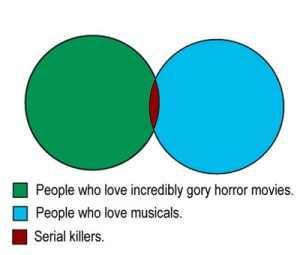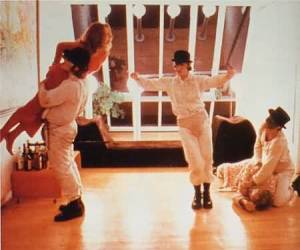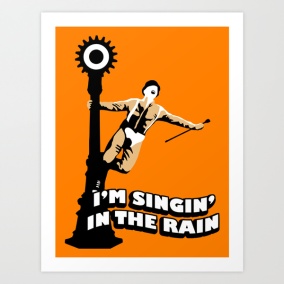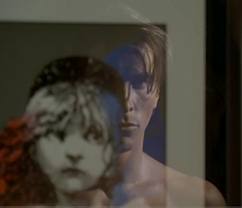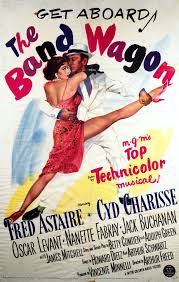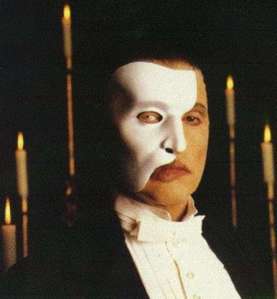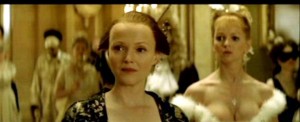A couple years back Cracked wrote an article about studios tricking audiences into seeing bad movies and one of their examples was Sweeney Todd: Demond Barber of Fleet Street. Not that the film is bad (in my expert opinion) but Warner Bros decided it would be easier to release trailers which didn’t disclose that the film was a musical because they felt that everyday audiences would be put off by all this singing malarkey. To demonstrate the dilemma Warner Bros was in, Cracked developed this delightful pie chart.
(http://www.cracked.com/article_15876_5-ways-hollywood-tricks-you-into-seeing-bad-movies.html)
I’ll admit I’m too squeamish to be a horror fan (let alone serial killer) but I’ve watched a lot of movies with murderous characters and noted that a love of musicals and love of killing do occasionally go together, like rama lama lama
ke ding a de dinga a dong.
Leon from Leon the Professional
Working as a professional hit-man, Leon lives without friends, family or even a conscience. He is reluctant to let Mathilda into his life after her family is killed but over time they form an emotional attachment, proving he is capable of love after all. Of course the film can’t just jump from a man having no soul to becoming a father figure, so early in the movie they place little hints that he is capable of feelings. Firstly is the love and care he takes to tent for his house plant. But secondly, and more important for the purposes of this article, is the look of wonder on his face when he goes to the cinema.
That look of wonder is inspired by Gene Kelly’s seminal classic Singin’ in the Rain. Now before you argue that the wonder of cinema itself is inspiring him, Leon is not exactly a movie fan. Later in the movie, Mathilda dresses up as famous actors such as Charlie Chaplin and Marylin Monroe. Leon doesn’t even recognise, let alone care for these characters, but when she begins singing and dancing around with an umbrella, as Kelly did in Singin’ in the Rain, it’s all smiling and fatherly affection.
What I’m trying to say is, people who don’t like musicals are more inhumane than some serial killers.
Alex in A Clockwork Orange
A Clockwork Orange was years ahead of Sweeney Todd in combining carnage and a good show tune. Alex proclaims his love of “Ultra violence” is brought upon by the music of Beethoven and Mozart, but one of the film’s most shocking scenes is the gang rape of a woman while belting out the lyrics to Singin’ in the Rain.
Makes you wonder what is up with that film when two of the killers on this list love it so much. Though this is the only example we get that Alex even cares about musicals, he does know all the words and I’m pretty certain that makes you a bit of a fan. Clockwork fans must have picked up on it because they developed this little mix of iconography.
This killer has no redeeming features. Call me old fashioned, I know lots of likeable characters who technically (or straight up) count as killers, but does rape definitely crossed the line between good and evil. The only good thing we can take from this is that even in such a bleak future, quality music at least survives.
Hannibal Lecter in The Silence of the Lambs
Once again we have a killer who primarily listens to opera (which makes me think I should re-write this list about murders who love opera). But Hannibal does quote song lyrics from the classic Broadway musical Oklahoma! when he says to Clarice that “people will say we’re in love.” He also rips the face off a man and wears it, shortly after eating another man’s ear.
There are two murders in the film and Lecter the Oklahoma! fan is the favourite by far. The film has been made into a musical know as Silence! The Musical but it is a parody with the opening number actually sung by lambs.
Patrick Bateman in American Psycho
Patrick Bateman rapes and kills women and men in his apartment with a Les Miserables poster on his wall.
He also mentions that he has matinee tickets to the show so he’s a pretty big fan. Anyone who has read the book or seen the film will know that it acts as a critique of soulless consumer culture. Musical fans may know that the 1980s not only marked the boom of Wall Street (which is blamed for giving these characters the money to be so consumer driven) but the rise of Megamusicals like Les Mis. These shows were heavily marketed money-making machines, hated by critics for having a lack of substance underneath all the epic stories and big sets. So it’s fitting that Bateman would love the high-grossing blockbuster musicals that are void of any real sentiment. His love of Les Mis is as much an understanding of this shallow character as his love of perfect business cards and Rolex’s.
I tip my hat to you author Bret Easton Ellis for creating an inside joke for us musical fans. Even though I love Les Miserables and in no way consider it part of the consumer culture or lacking in sentiment (I’ve yet to meet anyone who has seen it without crying), I understand why it has been viewed as such. Once again the film/book has been made into a musical, hopefully Bateman moonwalks with an axe to a decent show tune.

